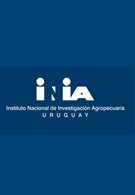Abstract: We report State-and-Transition Models for Uruguayan grasslands built upon a methodological approach that objectively defined states/phases associated, a priori, to rangeland management. Such approach was based on randomly sampled areas corresponding to mapped grassland communities. Each sampled area matched a MODIS pixel. Vegetation structural indicators were recorded in every pixel. After a multivariate analysis, field observations were grouped according to similarities in terms of structure, and different "states" and "phases" were identified. Ecosystem functioning and the supply of regulating ecosystem services were estimated for each grassland state/phase using the normalized difference vegetation index (NDVI) derived from MODIS sensor. Finally, workshops were held in order to detect local stakeholders? perceptions, and to discuss the management practices to promote the desired transitions among phases. Results were presented for two vegetation units of the Basaltic ?Cuesta? region. The ?inductive approach? applied not only led to the description of ?states?, but also to the identification of more subtle changes in vegetation ("phases"). Our approach minimized biases due to personal experience as well as differences derived from using different observation protocols. The two vegetation units presented an internal heterogeneity associated to changes in basal stratum height, total cover, stratification, frequency of decreasing species due to grazing, and proportion of plant functional types. The ecosystem functioning descriptors of each phase responded to extreme climatic events differently. Based on stakeholder?s opinions and experiences, stocking rate, sheep/cattle ratio, and grazing method were the main management practices promoting the transition among phases.

